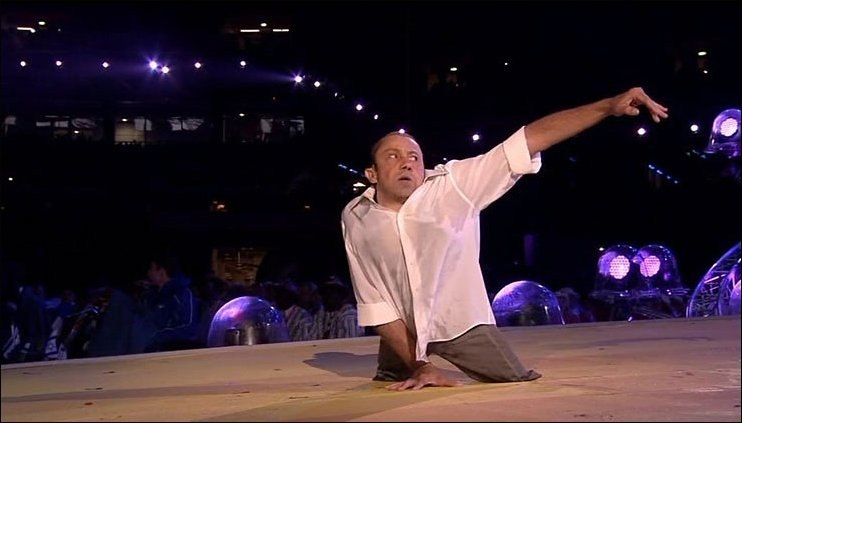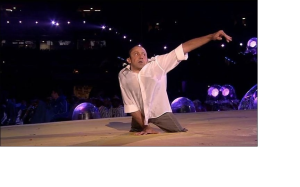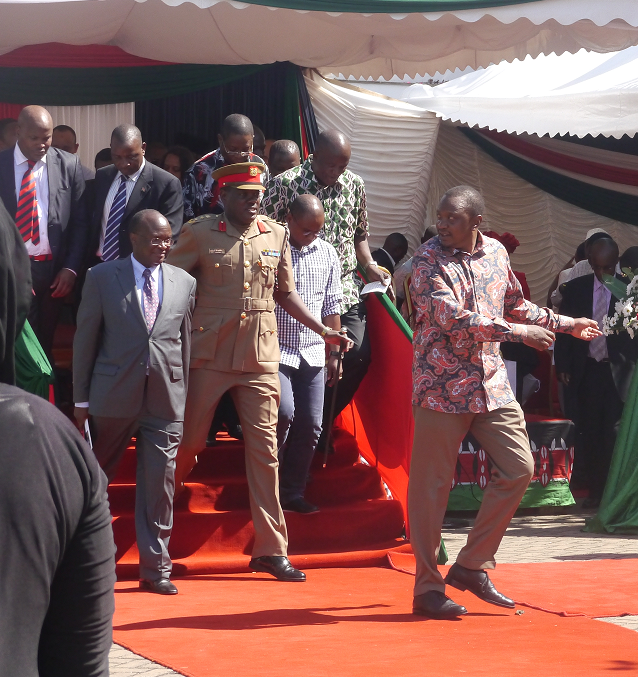
Living with disability
Watching David Toole dance on his hands at the opening ceremony of the paralympic games was a challenge for able-bodied people to transform misconceptions about disabled persons.
The 48 year old Toole had both legs amputated after he was born and because he found prosthetics frustrating, learnt how to move about without artificial legs. He had resigned himself to a fate of a boring job at a post office when he heard about a dance company that had a place for disabled dancers. The discovery that he could dance on his hands was accidental but he has been touring the world, dancing on his hands for 20 years.
Watching swimmers with no hands, wheelchair basketball, silent football, sports classified for varying disabilities left us humbled and awe-struck. The take-home message was clear, ‘do not pity us – we are capable of much more than you think’. To accomplish what those athletes did though requires that able-bodied persons accept their disabled family members and invest in them.
In rural Kenya, peering into the lives of families coping with disabilities does not reveal much to celebrate about.
Invisible girl
When we first visited Maureen Kai in April 2012, we found her lying on a matt under a mango tree, a small wound on her right temple. Maureen who suffers from autism as well as cerebral palsy appeared emaciated. Although 4 and a half years old, she looked like a two year old.
Maureen’s mother said she was fine at birth but she did not sit on time and cried many hours. Her in-laws told her it was witchcraft.
‘I took her to over 10 witchdoctors. Some slaughtered chicken, some passed fire over her body, others drenched her. Then I went to the church. They said that someone had thrown some ‘pepo’ (evil spirits) at me and I had passed the ‘pepo’ on to my daughter. They prayed to remove those ‘pepo’ but Maureen did not change. My in-laws found another witchdoctor who was an expert in ‘majini’. Nothing changed,’ Maureen’s mother said.
In the end, Maureen’s mother gave up. She feeds her daughter in the morning and leaves her on the matt under the mango tree as she goes out in search of food.
‘Nobody will watch over Maureen when I am away. She does not exist to this family. If it rains when I am away, I will find her where I left her, drenched to the bone. No one cares,’ Maureen’s mother said. Bear in mind that Maureen’s mother is only 22 years old and has 4 children that need food and clothes and her husband has no source of income.
‘I feel sad for Maureen because I don’t know what she feels. I don’t know what her problems are. She has no joy in her life, I don’t know,’ she said with palpable frustration.
When we asked Maureen’s mother if she could hold her for a photo, she sat Maureen up but would not engage with her. The detachment was painfully raw. Maureen ran a finger along her mother’s hand and getting no response, she withdrew. Maureen was too weak to sit up for long and slowly fell back on the matt.
When we left the compound, everyone had scattered to do their own thing. Maureen was still on the mat, under the mango tree, rocking herself gently. Alone in every possible way.
Mrs Dorothy Randu, the Kilifi District officer in charge of the Education, Assessment and Resource Center(EARC) says neglect of children with disabilities is a serious problem.
‘I have visited homes and found children tied in chains. We have found children locked in a house looking like animals, with no one to attend to them. Nobody wants to see them or be identified with them, even the parents. Being abused and neglected is very common,’ says Mrs Randu.
But she is quick to point out that not all care-givers are abusive.
‘Many parents are heartbroken to have a child who they feel has no future and they come to my office and break down from the pain they bear. But once they are put in touch with organisations that help them and they see that child achieve something, the parents come to my office with bright faces’, says Mrs Randu.
Hope for Maureen
On a hot October 2012 afternoon, we find Maureen at the Gede Special School. She is wearing her new uniform, plain brown skirt and checkered blouse. She has gained weight, her skin glows. When she is made to stand, she rocks herself, smiling and laughing joyfully, as though aware that those weak legs that can barely hold her up, will soon be walking. That ‘invisible’ child we found helpless, lying alone under a mango tree in April, has been transformed in a period of five months into a picture of hope.
How did this happen?
Through the research team at the KEMRI-wellcome trust in Kilifi, Maureen was admitted at the Kilifi District Hospital for three weeks in the month of May where she received treatment for malnutrition. The research team were wary of sending her home. Through ‘Kuhenza for children foundation’, Maureen was admitted at the Gede Special School.
Maureen’s case is less about money and more about families being aware of what is possible and cooperation among different groups. The ‘Kuhenza for children foundation’ director, Leonard Mbonani for example, visits Maureen’s family and is in regular contact with her father and the area chief. That group support will ensure that the changes in Maureen are sustained and that she will grow into an adult who will be capable of taking care of herself. Whereas in April, Maureen’s father had shown no interest in his daughter, he is so delighted by the changes in her that he is the one who is most actively involved with progress and collects her from school when they close.
Martha Mvera, the headteacher at the Gede Special School takes care of 23 children with Cerebral Palsy and 72 children with hearing impairment. She has high hopes for Maureen.
‘When she came here, she was very rigid and not used to being handled. Now she is social because of the friendly interactions she finds here. She can now sit unassisted and we believe that with time she will walk. Children worse than her have walked and we believe that the rehabilitation will help,’ said Martha Mvera.
Gede Special School is lucky to be receiving support from ‘Kuhenza for the children foundation’ who have build and equipped an occupational therapy building to handle Cerebral Palsy cases. They also pay for two occupational therapists to attend to the children.
According to Mrs Dorothy Randu of EARC, Cerebral Palsy is the most commonly diagnosed severe disability in Kilifi and Ganze District.
‘Cerebral Palsy rehabilitation requires a lot of equipment and personnel because of the helplessness of the children. Therefore there are fewer facilities to cater for those with Cerebral Palsy and most of these children will be at home even though the parents are aware of their condition,’ said Mrs Randu.
Although the staff at the education and assessment resource centre receive salaries every month, to run their programs, they are completely dependant on donors like Plan Kenya and other NGO’s to run their programs. The government last provided funding of KSH twenty thousand shillings in 2010.
Maureen’s terrific improvement has been sustained over the years since.Support from the sub-chief, the charity organisation, the school and supportive links with the KEMRI research group at Kilifi, have enabled the overwrought parents to see their daughter through a different lens. The sub-chief keeps an eye on homestead affairs, the charity ensures Maureen does not lack. Gona, a research officer at KEMRI-Kilifi has become like an adopted uncle, paying visits to little Maureen and ensuring that all is well.
Raising a child with disabilities anywhere is no easy task. In developed countries, social services provide relief to care-givers every once in a while. But when very young uneducated mothers, with little support, many more children to take care off, no reliable course of income – have to raise a disabled child, abuse and neglect are rarely far behind. Maureen was left lying on a mat all day, many are chained to trees outside, some are locked in rooms all day, others are kept in cartoon boxes or under beds. How can we put an end to this?





